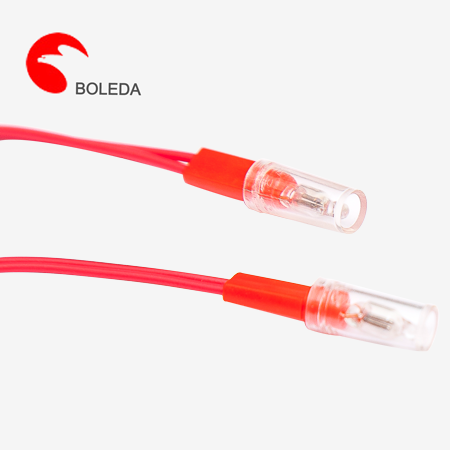A Complete Guide to Indicator Lamps: What You Should Know
Indicator lamps, also known as signal lamps or warning lights, play a vital role in providing crucial information about the status of a device, system, or vehicle. They are commonly used in automotive, industrial, and residential applications. This article aims to provide a comprehensive guide to understanding indicator lamps and their various uses.
1. What is an indicator lamp?
An indicator lamp is a small, colored light source that is used to visually represent a specific condition or operation status. It typically consists of a bulb that emits light when a current flows through it. The color of the light emitted is determined by the type of bulb used and its specific application.
2. Common colors and meanings:
- Red: Indicates a warning or an error condition, such as low battery, engine malfunction, or a security alarm.
- Green: Represents normal operation or a successful process completion.
- Yellow/Amber: Signifies a cautionary condition, such as low fuel, a pending issue, or a need for maintenance.
- Blue: Often used for informational purposes, such as indicating that a system is activated or a device is operating in a specific mode.
- White: Commonly used in interior lighting or illumination purposes.

3. Types of indicator lamps:
- Incandescent bulbs: These are the traditional indicator lamps that rely on a heated filament inside a bulb to produce light. They are low-cost, widely available, and often used in residential and automotive applications.
- LED indicators: Light-emitting diodes (LEDs) have become increasingly popular due to their energy efficiency, longevity, and versatility. LED indicators offer brighter light output, a wider range of colors, and allow for more precise control.
- OLED indicators: Organic Light-Emitting Diodes (OLEDs) are a newer technology that provides a thin, flexible, and highly efficient light source. They are commonly used in displays and small electronic devices.
4. Applications:
- Automotive: Indicator lamps in vehicles display various information, such as turn signals, high beam headlights, low fuel, seatbelt warning, and engine warning indicators.
- Industrial: Indicator lamps are widely used in machinery and control panels to indicate the operational status, fault detection, or specific conditions like power supply, temperature, or pressure levels.
- Residential: Indicator lamps find applications in household appliances, electronic devices, and security systems to provide status indications such as power on/off, battery status, or alarm activation.
5. Control mechanisms:
- Switches: Many indicator lamps are controlled by switches that activate them when a specific action or condition occurs, such as turning on a light switch or engaging a parking brake.
- Sensors: Some indicator lamps are activated by sensors that detect specific conditions, such as a temperature sensor triggering an overheating warning lamp in a vehicle.
- Programmable Logic Controllers (PLCs): Industrial applications often utilize PLCs to control indicator lamps based on programmed logic and inputs from various sensors and switches.
6. Importance of indicator lamps:
Indicator lamps play a crucial role in providing visual feedback to users, alerting them to potential issues, necessary actions, or system states. They enhance safety, efficiency, and user experience by quickly conveying information, minimizing downtime, preventing accidents, and guiding necessary actions.
In conclusion, indicator lamps are essential components in various devices, systems, and vehicles. Understanding their colors, types, applications, control mechanisms, and importance can help users interpret and respond appropriately to the information they provide. Whether it's in automotive dashboards, control panels, or household appliances, indicator lamps are key to ensuring efficient and safe operations.

 NE-2 orange color
NE-2 orange color 410 613 Neon lamp with resistor, cable and sleeve, resistor neon tubes
410 613 Neon lamp with resistor, cable and sleeve, resistor neon tubes 513 616 Neon lamp with resistor and cable and sleeve and ring terminal L terminal
513 616 Neon lamp with resistor and cable and sleeve and ring terminal L terminal E10BA9S Plastic Shell Tin soldering, butt welded, crimped Neon Glow Lamps
E10BA9S Plastic Shell Tin soldering, butt welded, crimped Neon Glow Lamps Fuse type Neon Lamp Tin soldering, butt welded, crimped with resistor for test pen
Fuse type Neon Lamp Tin soldering, butt welded, crimped with resistor for test pen 6 mm Neon indicator lamps, indicating lamps with resistor and PVC cableSilicone cable
6 mm Neon indicator lamps, indicating lamps with resistor and PVC cableSilicone cable 10 mm Neon indicator lamps, signal lights with PVC cable
10 mm Neon indicator lamps, signal lights with PVC cable 12 mm Neon indicator lamps red color with Crimped resistor PVC cable
12 mm Neon indicator lamps red color with Crimped resistor PVC cable 3mm5mm Led light, LED lamp with resistor and diode
3mm5mm Led light, LED lamp with resistor and diode 3 mm leds roundStrawflat shape, water cleardifussed
3 mm leds roundStrawflat shape, water cleardifussed 5 mm leds roundStraflat shape, water cleardifussed
5 mm leds roundStraflat shape, water cleardifussed





























Comment
(0)